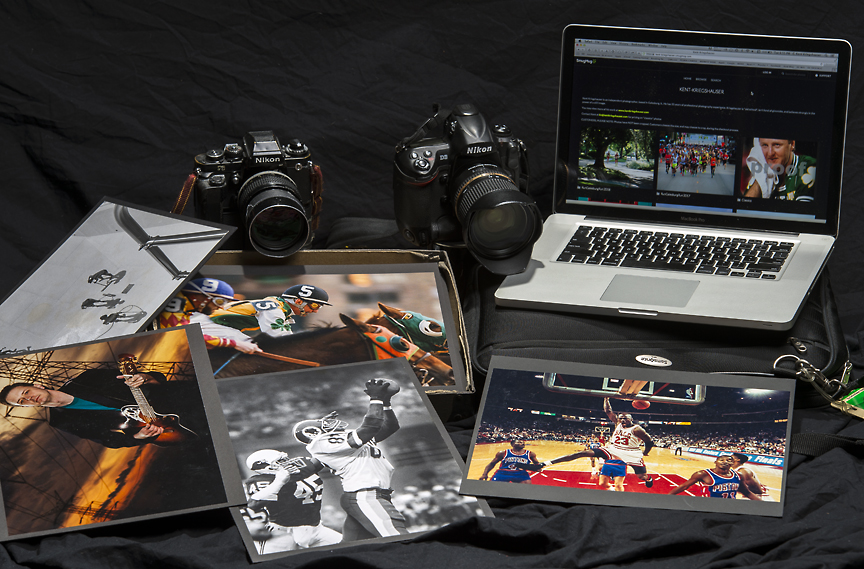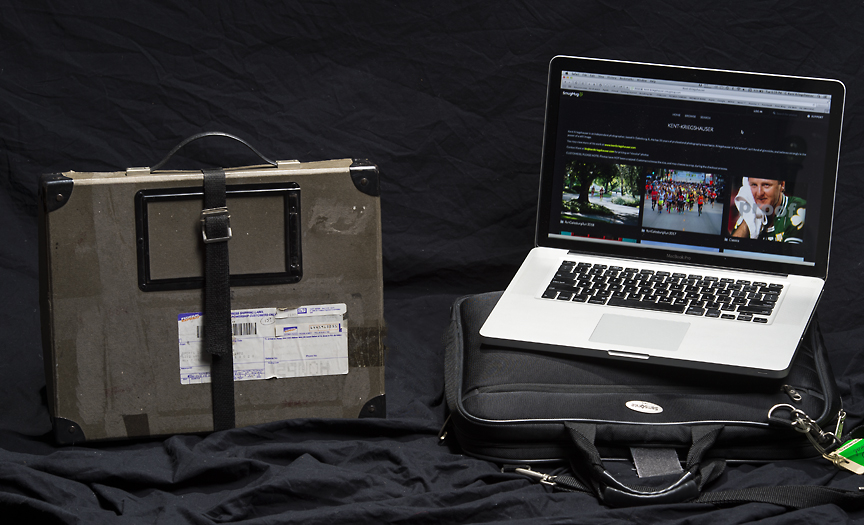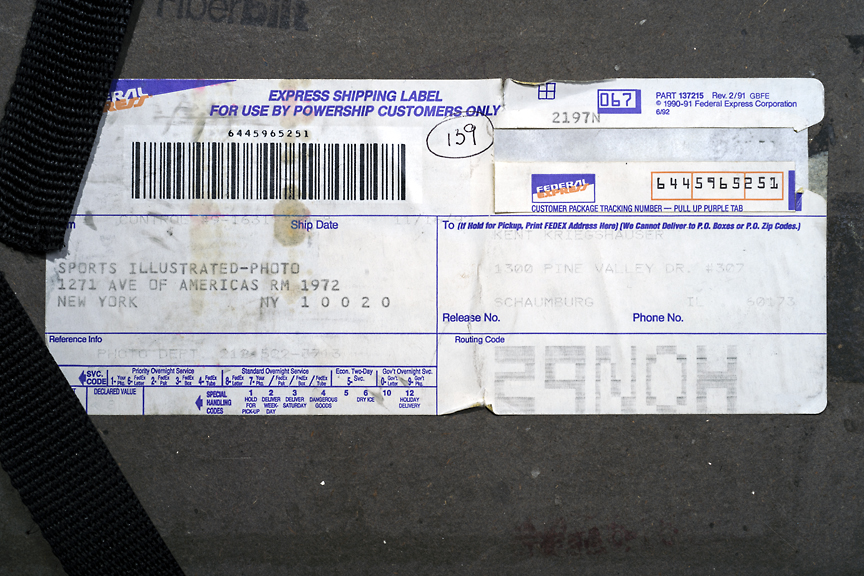It was a privilege to speak to the Kiwanis Club of Monmouth, Illinois on January 15th. The subject? Photography, how I began and where it has taken me. I didn’t spot anyone with their eyes closed, so maybe the photos were interesting enough. I don’t mind speaking to a group about photography. It’s my passion. But I am not a great speaker. I usually “wing it,” and can be a bit scattered. Every group is different.
This venue had no means to use a screen or projector. And with the Kiwanis group being smaller than some, I decided to take the laptop computer and hold it for all to to view the photos, planning to gather the group tightly. More on how that worked out shortly.
Also had the idea to take along a few props to show the group how much things have changed in a fairly short period of time. With me were a laptop computer, a Fiberbilt shipping case, one digital body with a newer lens, one film body with an older lens, and a 300mm 2.8 telephoto lens.
The laptop was to be used to view my primary web site. The Fiberbilt case housed older, mounted prints. A digital vs. analog thing. Guess what? The operating system in the old laptop wouldn’t allow that web site to load. How embarrassing! However, my secondary, SmugMug site, would load. Not all was lost.
“Show and tell” went reasonably well. Photos were held aloft. Many with a quick story behind them.
As the program progressed, it became MORE obvious to even me, how much has changed in aspects of the industry since I became a professional in 1983.
A photographer’s portfolio consisted of 20 or so prints, mounted on 11X14 matte boards. The prints served as a portfolio and may be used in contests. To make a perfect print, long hours were spent in a darkroom. It was not uncommon to spend one hour per print, to get the perfect combination of exposure, contrast, burning, and dodging. A lot of this went on after hours when one could have a darkroom all to their self. Setting up everything just right, maybe with music, and getting into a groove. Working late also prevented the supervisors know you were updating your portfolio and may be looking for another job!
If you were applying for a job, your prints were shipped via the before-mentioned Fiberbilt case (see photos). Somewhat heavy. If it got lost, you were hosed. Ambitious photographers may have put in the hours in the darkroom to have two portfolios. This allowed to have two job applications out at the same time. Now? The sky is the limit. A web site is your portfolio. Apply for as many jobs as you want!
To learn of open positions, the two “go to” sources were Editor&Publisher magazine, and the National Press Photographer’s Association job bank. With the job bank, one would send five, self-addressed, stamped envelopes, and job postings would be sent weekly for those five weeks. Now? In most cases, one doesn’t even reach the photo department. Some human resources robot who might not know anything about photography, is weeding out applicants before the photo editor may lay eyes on a picture.
In “the day,” it was not uncommon to contact a publication in advance, to let them know you’d be passing through. Most all would receive you and review your work, even if there were no openings. The Chicago Tribune, Chicago Sun-Times, St. Louis Post-Dispatch, Dallas Times Herald, and Fort Collins Coloradoan, all gave me valuable feedback in such cases. These days, most aren’t receiving photographers, they are getting rid of them!
With today’s presentation, I was also able to point out the skyrocketing costs of equipment in this digital age. And why professionals have to ask what they do in rates.
The “good old days.” Things were more difficult. Tomorrow, I’ll take my digital cameras and make basketball photographs. I can see, almost instantly, if I got a “keeper” frame.
Oh well…Everything changes.



